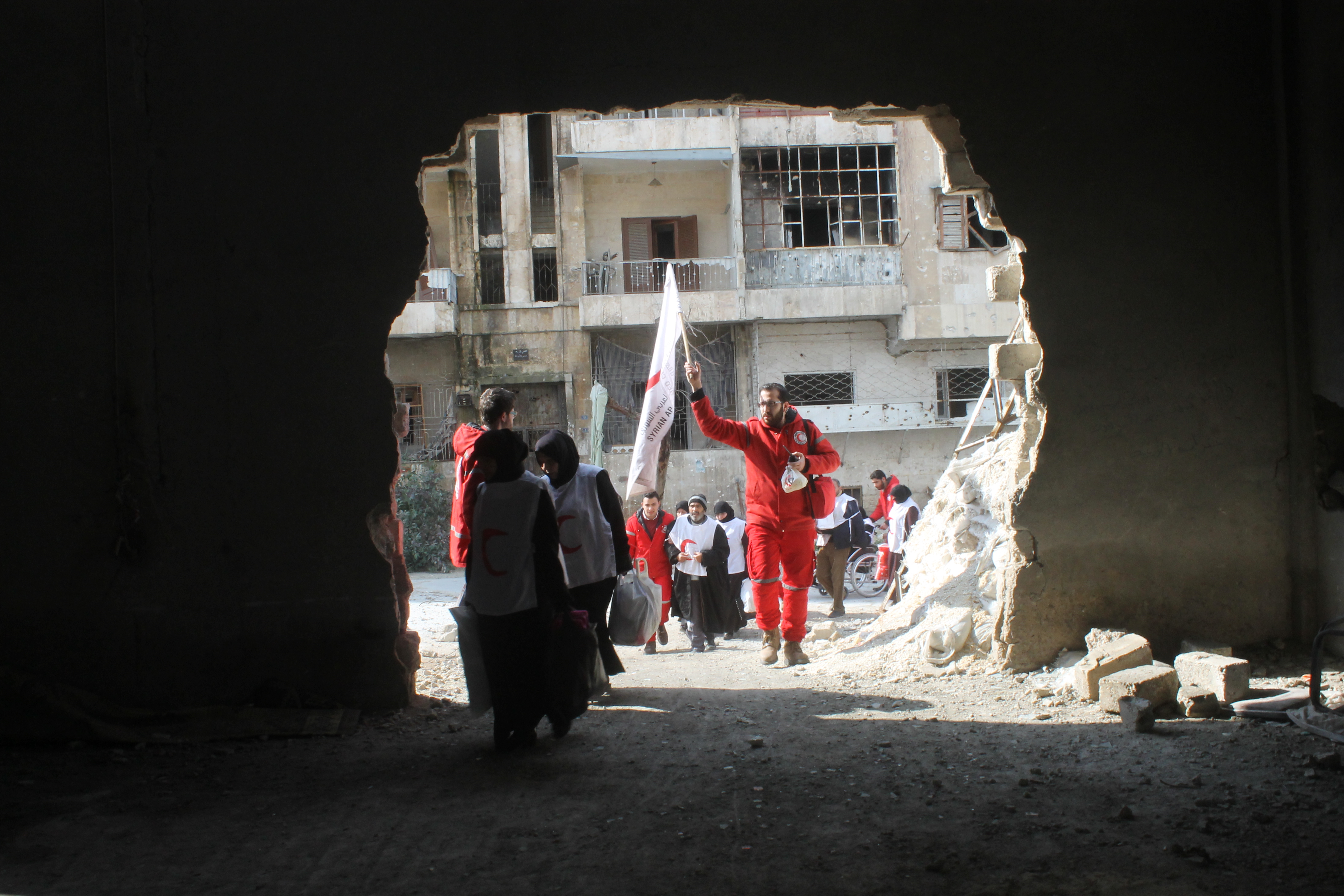“A Trip Through Aleppo’s Crossing of Death”

“Attention!” the soldier calls to the rest of his unit, positioned behind their rifles and barricades. “Attention! Hold sniper fire, civilians crossing”

At a bus terminal known to residents as the Aleppo Crossing of Death, people are about to go from rebel-held territory to the regime-controlled part of Aleppo, The route is a lifeline for medical emergencies and people with chronic illnesses who need regular treatment that they cannot get in rebel-held areas.
Over a six-month period, a Red Crescent team has managed to get 250 people across the lines so that they can receive the specialist hospital treatment they need.
The journey once took no more than five minutes, but now it takes over two hours due to the obstacles, checkpoints and security measures that must be navigated.
Time is no longer about geography and distance; it is subject to the whims of authority.
The crossings began in July 2014 after the Syrian Red Crescent proposed helping people with chronic illnesses to go through the bus terminal to receive treatment on the government side.
Dozens of people now make the crossing every week under the supervision of the Red Crescent team. Around 40 crossed in the first seven days of February 2015, the highest weekly number so far.
The logistical arrangements were complex, and included a deal to bring medicines and vaccines into rebel-held areas. A ceasefire was agreed for whenever the Red Crescent team went through the crossing, although it has been breached countless times, especially when medicines and vaccines are being transported.
Pharmaceuticals often come from the International Committee of the Red Cross or from the United Nations. The Red Crescent supervises transit through the terminal and then distributes them to hospitals in Aleppo.
If the supplies are to be distributed in the countryside around Aleppo, then the Red Crescent must escort them on the journey along the Damascus-Aleppo highway.
A spokesperson for the Red Crescent explained how the scheduling worked.
“Facilitated crossings usually take place twice a week, on Sundays and Wednesdays. In the beginning we had only a few, but they’ve gradually increased so that they sometimes reach 30 in a single day.”
The Ahrar al-Sham faction which controls the rebel side of the terminal crossing consistently allows the Red Crescent team to pass.
Yasser Flis, an Ahrar al-Sham fighter in charge of the crossing, explained, “It’s a long journey, and often very difficult for those with serious illnesses. There are no facilities or treatments for those suffering from cancer, kidney disease or other illnesses of that sort…. That’s why we decided to allow such cases to pass through the terminal crossing.”
Flis explained that the decision was taken in consultation with all the rebel factions on the front line.
Doctors on the Red Crescent team establish whether each case is genuine. One of them, who asked to remain anonymous, said, “Most of the cases we see are those with tumours, mainly cancers, and then there are those who require cardiac catheterisation or MRI brain scans.”
The medical team also examines patients to see whether they are fit to travel, and permission to travel must also be given by the security services on either side. Dozens of people have been denied security permission to cross, even though they are in critical condition.
Abu Muhammad, 50, needs surgery to fix the botched amputation of his leg, after a car accident in the Tariq al-Bab neighbourhood. He has been given both medical and security clearance, so he is ready to cross over.
However, a 15-year-old boy was not given security clearance to cross for a badly-needed brain scan.
The Red Crescent team is working on opening the crossing further, even if it is just for a few hours a week. If it is successful, it will be a major achievement.
